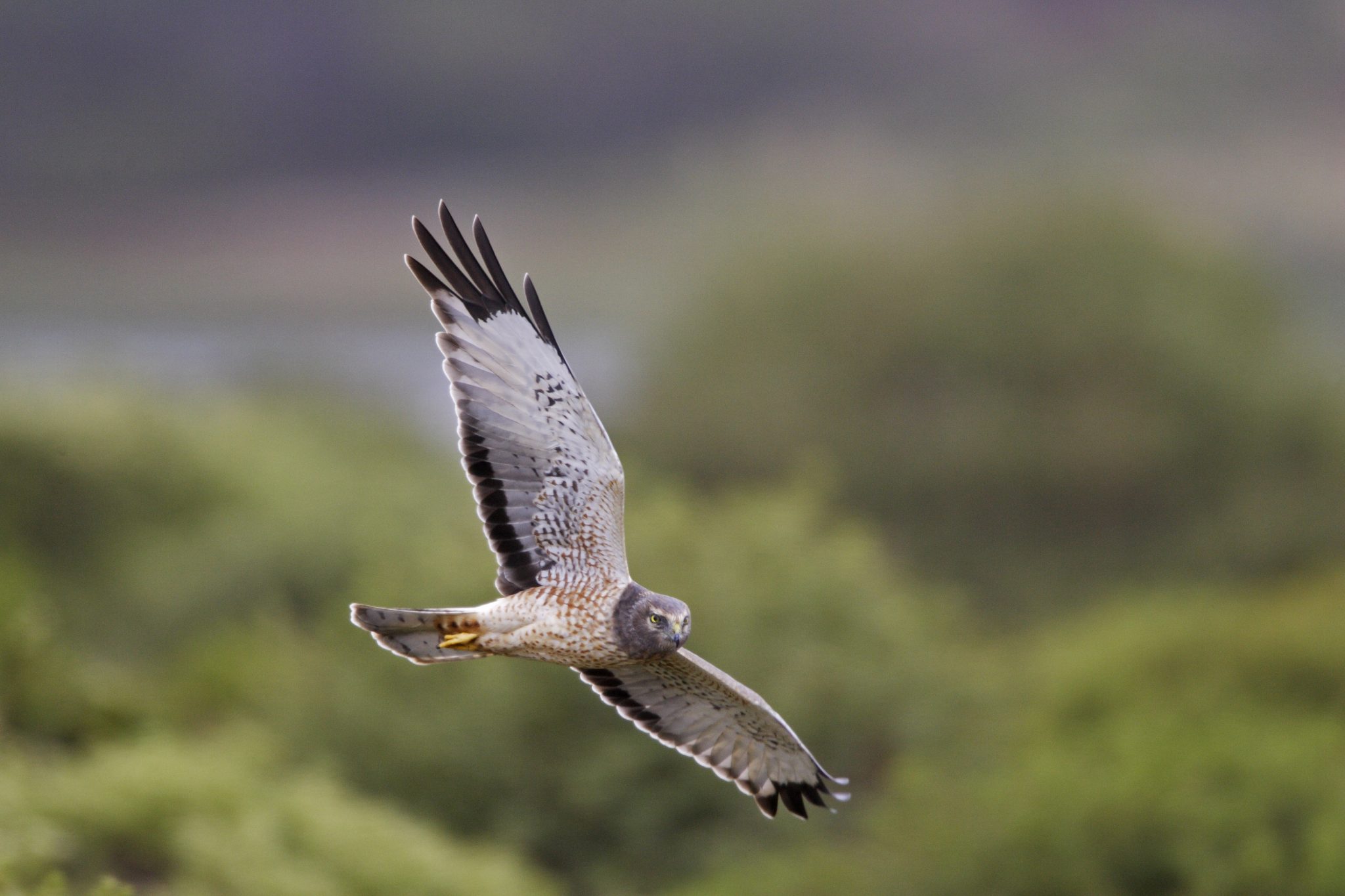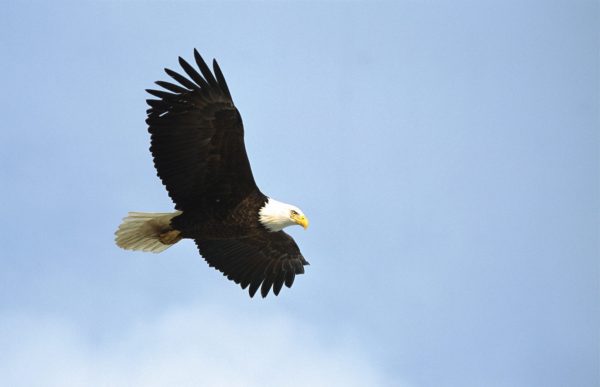*This is an excerpt from Common Birds of Prey of Alabama, ANR – 1386.
Though most raptors hunt from high above, the northern harrier is frequently seen hunting just a few feet above the ground in marshes and grasslands. Commonly referred to as the marsh hawk or sparrow hawk, females of the species are mostly dark brown above with a pale underside barred with dark brown. Males on the other hand, are mostly pale gray above and white below. The characteristic that most easily distinguishes them from other gray raptors are the black wingtips visible from both below and above during flight and a white rump patch.
Read here to learn more about common birds of prey of Alabama.
Download a PDF of Common Birds of Prey of Alabama, ANR – 1386.
Read More related articlesRelated Topics
*This is an excerpt from Common Birds of Prey of Alabama, ANR – 1386
The great horned owl is the largest and probably most common owl species in Alabama. Though most easily identified by their large size and widely spaced ear tufts, great horned owls are mostly gray above and barred beneath with rusty-orange feathers around their eyes. Common habitats include agricultural fields, forests, and forest edges, but these birds can be found in almost any habitat harboring enough prey to support them.
Read here to learn more about common birds of prey of Alabama.
Download a PDF of Common Birds of Prey of Alabama, ANR – 1386.
*This is an excerpt from Common Birds of Prey of Alabama, ANR – 1386
Found primarily in large forests, barred owls are easily identified by the brown streaks visible on their bellies and their lack of ear tufts. These birds also have dark eyes, which distinguish them from most other eastern owls, which have yellow eyes.
Read here to learn more about common birds of prey of Alabama.
Download a PDF of Common Birds of Prey of Alabama, ANR – 1386.
*This is an excerpt from Common Birds of Prey of Alabama, ANR – 1386.
Found year round throughout Alabama, Cooper’s hawks are similar to sharp-shinned hawks. Averaging around one pound, Cooper’s hawks are larger than sharp-shinned hawks. Almost identical in coloration, Cooper’s hawks can be distinguished from sharpshinned hawks by their longer, rounder tails, larger heads and straighter wings. As with sharp-shinned hawks, Cooper’s hawks eat mostly smaller songbirds and are found in and around forests.
Read here to learn more about common birds of prey of Alabama.
Download a PDF of Common Birds of Prey of Alabama, ANR – 1386.


